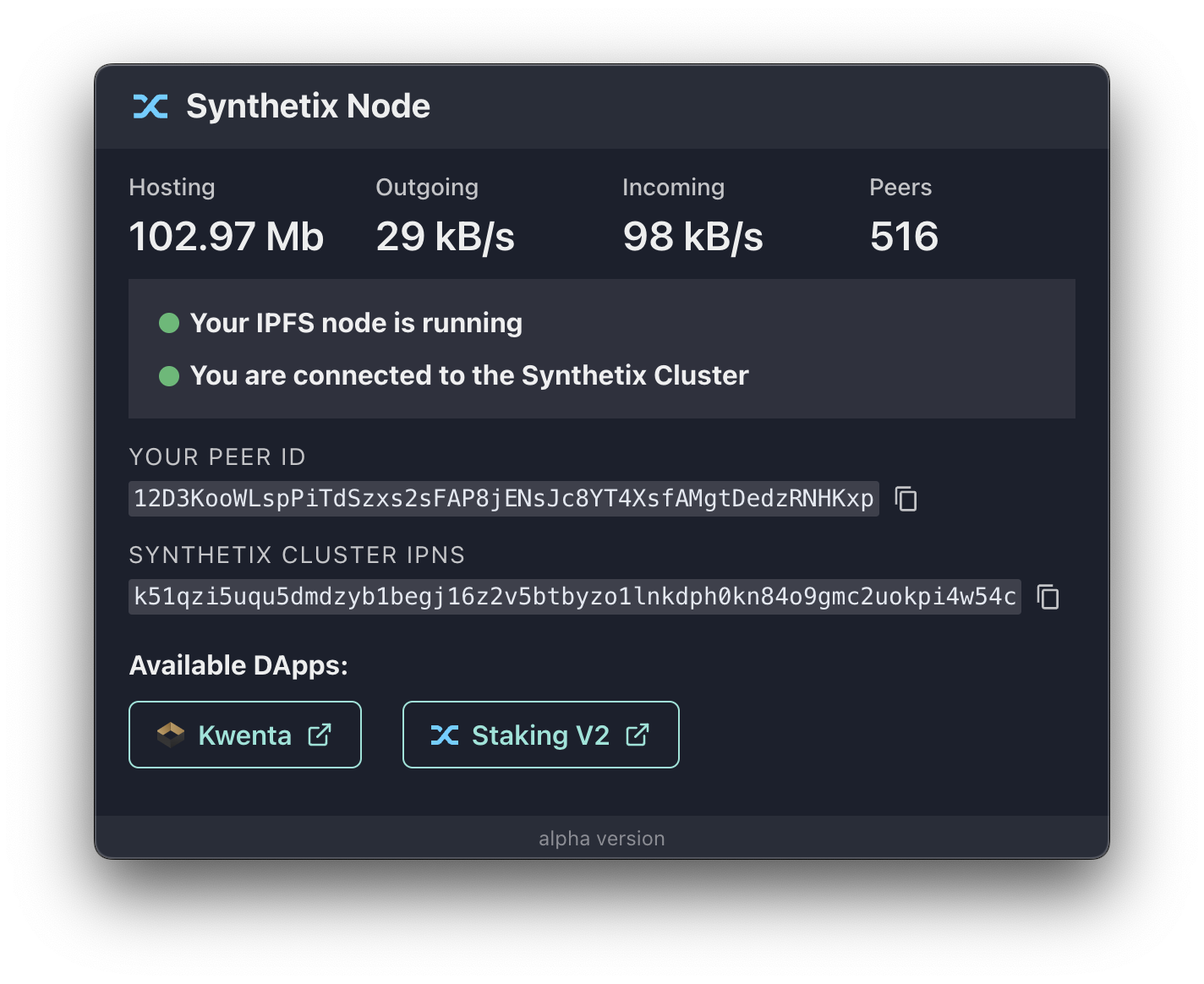Decentralization of Frontends within the Synthetix Ecosystem

Synthetix is excited to announce the decentralization of frontends within the Synthetix Ecosystem by introducing the Synthetix IPFS Node. This will enable users to access fully decentralized and resilient frontends, like Synthetix Staking V2 and Kwenta, without having to rely on centralized hosting services, providing a more secure and seamless experience in the Synthetix Ecosystem. By running your own Synthetix IPFS Node, you can contribute to this decentralization and improve front-end loading speeds for a better user experience.
What is IPFS?
The InterPlanetary File System (IPFS) is a peer-to-peer protocol designed to make the web faster, safer, and more open. IPFS replaces the traditional, centralized model of the web with a distributed network, making it more resilient to failures and censorship. This decentralized approach allows web applications to be hosted and accessed in a more secure and reliable manner.
IPFS Clusters and Their Benefits
An IPFS cluster is a group of IPFS nodes that collaborate to provide a single, highly-available, and distributed service. This increases the redundancy, reliability, and availability of data within the network. By running a Synthetix IPFS Node, you can support the decentralized hosting of web applications such as Synthetix Staking and Kwenta, improving their overall performance and resilience.
Supporting Synthetix Ecosystem with Your Own Node
By running a Synthetix IPFS Node, you can directly contribute to the decentralization, reliability, performance, and censorship-resistance of the frontends within the Synthetix Ecosystem. The more nodes participating in the swarm, the better the pinned front-ends perform, as they load faster due to local availability of the latest version. Anyone with a computer and an internet connection can join the swarm, even without 100% uptime.
Getting Started with Synthetix IPFS Node

To set up a Synthetix IPFS Node, you will need to follow the instructions provided at the Synthetix GitHub IPFS Node repository. Follow the steps to get your node up and running, and start contributing to the decentralization of the frontends within the Synthetix Ecosystem.
In Conclusion
The introduction of the Synthetix IPFS Node marks a significant step towards continued decentralization of core services within the Synthetix Ecosystem. By setting up and running your own Synthetix IPFS Node, you can actively contribute to this decentralization. Remember, you don't need 100% uptime to participate, so anyone with a computer and an internet connection can join and support this initiative.

